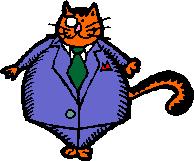The last post of 2012. Oh, the pressure!
This makes me think of endings… and beginnings. These ideas fortuitously play into the topic at hand – when should a writer abandon a scene/plot/character/work that just isn’t working rather than rewriting for the fiftieth time?
My story, A Guardian’s Destiny, was a work in process for sixteen months, give or take. I wrote, rewrote, edited, revised, rewrote and on and on for what was longer than was good for me or it. I was halfway through rewrites that added a major character when I couldn’t take it any more. I knew it needed fixed, but I couldn’t figure out what the fix might be. Frustration didn’t begin to cover how I felt. When I stepped back and looked at it with some small measure of objectivity, I could see it had “Edit Face.” Not pretty. So, I put it in a virtual drawer and began something else.
When do you make that call? End one thing, begin another?
That is a personal decision, but here are some things to consider.
- Time – How long have you worked on your scene/plot/character/work? Think about Return on Investment or Lost Opportunity Costs. Yes, we want our writing to be its best, but it will never be perfect and we need to recognize the tipping point where we have gone beyond productive effort. If you could have written a multitude of other scenes/plots/characters/works in the time you’ve spent on this particular one, then maybe it’s time to let it go and move on.
- Sanity – Is it making you crazy? My story was. That’s not constructive and it’s stressful.
- Distance – Sometimes, it isn’t that you need to completely abandon your scene/plot/character/work, it’s that you need some distance from it. Your muse may need time to gel. Time to work out exactly what the problem is and how to fix it. It may be weeks, months, years or never. You just never know.
- Perspective – It’s just a story. We’re not curing cancer. Don’t marry your scene/plot/character/work. You need to have some perspective. Sometimes, things just aren’t working and you need to stop. If it helps, save all the drafts or put any deleted text into a different document. Then it isn’t really gone, just not where it isn’t working.
A Guardian’s Destiny has been tucked away for six to ten months. My critique partner asked to read it anyway despite my protestations that it seemed hopeless. After all this time and with her help, I think it may be time to take it back out and finish it. With a second set of eyes and ideas, it may yet be salvageable, but I know now that if it isn’t complete in a reasonable amount of time (not months on end), then back in the drawer it goes.
Here are some sayings that I keep in mind to help me.
A certain amount of opposition is a great help to man. Kites rise against, not with, the wind…… John Neal
It’s only a book. If nothing is happening – hit delete and start over. ….. I don’t remember where I heard this, sorry.
When your moment of truth comes, remind yourself: They told me it would be hard. This is what hard feels like. I can do this. ….. Rachelle Gardner, Literary Agent
What do y’all think? I’d love more great quotes and/or tales of death, birth and maybe rebirth of your scene/plot/character/work.




